[vc_row][vc_column][vc_column_text]Newsrooms in India have stayed Brahmin-only enclaves, it is time to change that, writes Sudipto Mondal in Al Jazeera
Every effort was made last summer to keep the diversity project at the Asian College of Journalism (ACJ) a secret. But word had somehow gotten out a few days after classes started that some students had got special caste-based scholarships to study at the premier journalism school in Chennai where tuition and boarding are far from inexpensive.
Many upper-caste students from middle-class backgrounds in the 2016-17 cohort were outraged. They started a whisper campaign against the project and called it “reverse casteism”. As word spread, upper-caste middle-class alumni joined the hissing chorus accusing the institute’s founders of being “fake communists” on a project to “inject Marxism, practise casteism and charge a bomb” from students.
The slightly more progressive among them said they didn’t have a problem with caste-based scholarships but also wanted institutional support for the economically weak or in other words poor, upper-caste aspirants.
The thing about ACJ and every other private English-medium premier journalism institute in the country is that students from the so-called upper-castes form a crushing majority in the classroom and, as a consequence, in the influential alumni network.
Rich/poor, rural/urban, linguistically diverse, Hindu, Muslim, Christian and all shades of brown; they appear incredibly diverse to those suffering from a type of blindness that is common in the subcontinent. But to the discerning eye, they are all depressingly similar.
Like any other premier institution in India – academic, legislative, judicial, bureaucratic, or journalistic – ACJ can be a very alien place if you are from the “other” social groups.
Of the 190 Indians who joined ACJ last June, the management could identify only six Dalits and one Adivasi. The rest – irrespective of their religion, the languages they spoke or whether they ate beef – were Savarnas, the so-called touchable castes. As was the case every year, the largest group was Bengali Savarnas, followed by Hindi Savarnas, followed by Malayalee Savarnas. And like every year, of these “touchables”, a majority were Brahmins.
The predominance of the Brahmin in the profession is as old as English journalism in this country. But what’s truly distressing is that more than 200 years on, the modern journalism classroom is almost a replica of the typical Indian English newsroom.
It’s dangerous to introduce Dalits and Adivasis into a space like this where they are heavily outnumbered, bitterly resented as “freeloaders” and able to walk with pride only by concealing their true identity. Dalit and Adivasi activists and student leaders have discouraged students from applying for the ACJ scholarship and pushed them towards careers in academia and the civil services. Those sectors are also not free of casteism, but at least there’s some assurance they won’t be fired because somebody didn’t like the stock they came from.
The four fully funded seats that ACJ has been offering students from Scheduled Castes and Scheduled Tribes (SC/ST) for the last 10 years have mostly gone unclaimed. There weren’t enough applicants and, more tragically, those that applied couldn’t defeat the more privileged contestants in the entrance exam.
Then one day six Dalits and one Adivasi student knocked on the doors of the institute last summer – three were girls, and two of the boys were from the extremely marginalised Madiga caste. Only one among them was from a well-off family and able to pay the school fee. Among the others, three were children of daily wage labourers, one girl’s father was a farmer and mother a schoolteacher, and two were from single-income families where the father held a low-income job.
All of them competed against, and beat, aspirants who had generations of privilege behind them.
ACJ and the South Asia Foundation (SAF) shouldered close to 2,000,000 rupees ($30,800) of the cost of tuition and boarding for the six students. When that fell short, a funding call went out to a select group of senior journalists working in English-language media who could be trusted to support affirmative action. They made the deficit vanish in just over a week. There was still enough left to sponsor the students for additional English coaching at the British Council in Chennai.
But the donations kept pouring in, and now, at the end of the course, each of the six students also has a laptop, camera and voice recorder.
The group of senior journalists is now planning to make it an annual programme, expand it to include other journalism schools and call a round table meeting of Indian editors to make them commit to diversity.
Meanwhile, as they were graduating, each of the SC/ST students told me that somebody had come up to them asking if they knew who “those” students were. “My own roommate started telling me that he wanted to find out who had got the scholarships. He wanted to find out if they were truly deserving,” one of the Dalit students told me and laughed, “His only problem was he couldn’t make out who was Dalit or Adivasi by looking at them.”
It is truly a great mercy that some Brahmins can be the colour of ebony and some Dalits can be lighter than peaches. Every person who got the scholarship in the last 10 years, despite being as good as everybody else, has had to play this sad game of hide and seek. As they do every year, management stepped in and disciplined the wannabe caste vigilantes before they could find other means to sniff out the group of six.
There are still more openly queer people in English journalism than people who admit to being Dalit. Indian journalism is so mind-numbingly upper-caste that the mere act of “coming out” by journalist Yashica Dutt was celebrated as a milestone in the quest for caste diversity.
It’s not like a newsroom is a village where everybody knows whose daughter or son you are and where you live. It’s simply easier for Dalits to avoid calling out newsroom rock stars for their frat-boy privilege and melt into the crowd where everybody assumes you are Bengali gentry when you say you are from Bengal.
After searching the country for more than 10 years, I have been able to find eight Dalit journalists in the English media. Only two of them have risked “coming out”.
About six years ago, when one of them, after a lot of hesitation, revealed his caste to a group of Left-oriented Brahmin colleagues he was close to, one of them said, “What is Dalit about you? Why should you claim that identity?”
He was too shocked to reply that day but waits to this day to go back and tell her, “I am not Dalit enough for you because I speak good English, dress fashionably, hang out with the hippest crowd in town. Would I be satisfactorily Dalit if I was collecting the garbage outside your door, skinning your dead cow or if the women in my family were Devadasis and rape victims?”
Of the eight I found, only four are still in journalism.
The Brahmin newsroom
Ten years ago, English newspaper editors were still telling reporters that there was no readership for stories of atrocities on Dalits, Adivasis and Muslims. Today, they are paying airfares and booking taxis for reporters willing to travel to remote villages and report the latest atrocity down to its last emotional detail.
Part of the reason for this uncharacteristic interest in the outcasts is that, in this last decade, so-called alternate outlets run by editors from the Dalit, Bahujan, Adivasi, Muslim, Kashmiri and North Eastern communities have attracted online audiences large enough to force a course correction on the so-called mainstream English media.
Thanks to force-multipliers like Facebook and Twitter, websites that would earlier get dismissed as fringe are now in the middle of the wolfpack that’s chasing breaking news: Dalit Camera, Round Table India, Velivada, Adivasi Resurgence, Sahil Online, Milli Gazette, Kashmir Reader, Raiot and Thumb Print are just a few examples.
More than 90 percent of the students had been placed in a newsroom before the ACJ convocation last May, including those who had a problem with the SC/ST scholarship. In the coming days, they will do everything to impress their new editors, maybe even write a bleeding-heart story on the latest Dalit atrocity.
As for the seven SC/ST students, one wasn’t impressed with journalism at the end of the course and dropped out of placements to prepare for the civil services. Four have been offered jobs by some of the best news corporations in the country. The other two have turned down offers and are waiting for something better to come up. All of them made a pact to reveal their caste identities only after they make a name for themselves in the profession.
It is sad that the six Dalit students should aspire to be so heroic in a profession where most jobs still go to those with connections.
There isn’t a shortage of Brahmins from poor families making it big in journalism. I’ve lost count of how many times a successful Brahmin journalist complained that if it weren’t for SC/ST reservations, they would have become scientists or officers in the Indian Administrative Service (IAS – the cream of the Indian bureaucracy).
Children of Brahmin IAS officers get hired in newsrooms even when they say during their interview that working on the editing desk is just a stop-gap to help them brush up on their general knowledge because they want to be bureaucrats like their parents.
A legacy newspaper in the South extended a Brahmin reporter’s probation four times when most reporters are fired at strike two. Could the fact that his father and grandfather were also reporters at the same newspaper have something to do with it?
This is not the only newspaper that’s hired generations of mostly men from the same Brahmin family. There are many examples of Brahmin reporters posted in the same district or city where their ascendants were also reporters for the same publication.
The story about a third-generation reporter posted in a small temple town, for example, came to me from the man himself. He took pride in keeping up an ancestral tradition and bragged that his family’s influence went all the way to Delhi. “If you want special darshan or prayer service, just call me,” he said and shared the most incredible story about the newspaper’s owners, “Whenever they would come for a pilgrimage, they would stay at my house. They are very pure people and don’t like eating outside (for you never know what hands touched the food).”
Nobody is quite sure why so many Brahmins are hired as reporters.
It is not like Dalits and Adivasis are unable to break into English journalism because they can’t speak English or because they make bad journalists. Any mainstream news outlet in the country can offer proof that there is no shortage of bad journalists in India. An audit of the raw copies filed by reporters of English newspapers should bear out the fact that most reporters can’t string together a decent sentence in English.
If that sounds like an exaggeration, watch them on live TV news or follow them on social media where there is no sub-editor to refashion their dispatches into English.
It may seem shocking at first that merit would be so thoroughly ignored in Indian newsrooms which have a pronounced anti-reservation tilt. But this sits in perfect harmony with an economy where inheritance is still the main source of capital and conflict of interest is a socioeconomic opportunity, the kind that turns clients into family and family into clients.
We live in a country where it isn’t seen as a problem when a Reddy judge acquits Reddy men who openly butchered Dalits, but it’s a major scandal and a contempt of court when a Dalit judge complains that upper-caste judges are discriminating against him. It’s uncomfortable to allow a Muslim reporter to cover the national security beat but it’s award-winning journalism when a Brahmin reporter promotes a dying Brahmin art form and refers respectfully to the Brahmin artiste preserving it as “doyen” and “maestro”.
The white male American journalism
“It is because of white, male, American journalists that the world knows about Malcolm X and Rosa Parks,” a white man shouted at me from the audience in June 2011 when I was part of a panel discussing newsroom diversity at an event hosted by a think-tank in Boston. The white man was angry because I had called that year’s Investigative Reporters and Editors Conference – where 1,000 US investigative journalists had gathered the previous week – an endless parade of white men.
The angry white man, who later introduced himself as a journalist, made one wonder how much tougher it must be for African Americans to slip into US newsrooms without being noticed.
But that’s the thing about Americans, they are not just more prosperous but also more socially and culturally advanced than the average Indian.
It’s not in the least because they abolished slavery before we abolished untouchability or because they elected a black president as we still wait for a Dalit, Adivasi or Muslim prime minister. Attacks on racial minorities, particularly blacks, is still a shocking and consistent feature of life there, and yes, Donald Trump is now president.
But it is unthinkable that a black man will be prevented from entering a public space in the US while the newspapers remain silent. In India, even elected representatives and celebrities cannot enter certain temples if they are not from the touchable castes. You can’t buy tea or a haircut in most villages around Bangalore if you are a Dalit, but you wouldn’t know this reality because the English newspaper you read thinks you’re not interested. Indian media is not interested in the daily and boring aspects of caste such as social exclusion and segregation.
Like many things, American journalism is also more evolved than ours. Back in 1978, the American Society of Newspaper Editors (ASNE) passed a historic resolution calling for greater inclusion of minorities in American newsrooms. Since then, the ASNE maintains a strict audit of the diversity ratios, and provides support and training assistance to aspiring journalists from oppressed communities.
Their 2016 survey showed that 13 percent of newsroom leaders and 17 percent of the total editorial team (in 737 organisations surveyed) were from minorities. When they started more than three decades ago, less than 4 percent of American journalists were from minority communities.
In India, where most editors don’t even acknowledge that there is a problem, suggesting a diversity survey of newsrooms evokes instant allegations of reverse casteism or that other upper-caste harangue about the death of merit.
American journalism has another glorious tradition – the black press. News organisations of, by and for African Americans. Their might was on full display during the Black Lives Matter agitations.
The first issue of the first black-owned and published newspaper, Freedom’s Journal, hangs on a prominent wall at the Newseum in Washington, DC. Its editors, Samuel Cornish and John Russworm, put out a stirring declaration in their first issue on March 16, 1827:
“Too long have others spoken for us. Too long has the publick been deceived by misrepresentations in things which concern us dearly…We wish to plead our own cause.”
I wish I had found these lines to throw at the white man in Boston who, as late as 2011, saw nothing wrong with the world learning about Malcolm X and Rosa Parks through the eyes of white male journalists.
Through an untouchable’s eye
It is nobody’s allegation that all white journalists are racist or that all Brahmin journalists are casteist. There can be no doubt that some of the finest commentaries, reportage and scholarship on the Indian caste system have been produced by Brahmin journalists and intellectuals. But for those who defend the systematic social exclusion in India’s newsrooms by pointing to upper-caste journalists who did a sterling job on caste, I now have an indigenously developed repartee, “The world needs to know what it looks like through an untouchable’s eye.”
It’s a spin on the catchphrase coined by the founders of Dalit Camera, “Dalit Camera: Through Untouchable Eyes”.
It is not the hope of those who supported ACJ’s diversity project that all the Dalits and Adivasis benefitting from it will make reporting on caste, communalism and poverty the focus of their careers.
The hope is that they too will have a share in the power, prestige and international reach that comes with being an English journalist in India.
Behind them are families and entire communities hoping their children too will one day cover the prime minister’s press conference, fly out with the Indian cricket team, interview Shahrukh Khan in his house, test drive the latest Mercedes, go on foreign junkets, bring home expensive gifts, or play their contacts to bag awards and fat fellowships.
The seven, who shall not be named, need only to mark their presence where they are not welcome without the burden of goodness or piety. It is simply unfair for all bad English reporters to be Brahmin or Savarna.
Sudipto Mondal in an investigative journalist who reports mostly from South India on caste, communalism and corruption. He is writing a book on the death of the Dalit research scholar Rohith Vemula and the 25-year history of the organisation to which he belonged, the Ambedkar Students’ Association.
Courtesy: Al Jazeera
[/vc_column_text][/vc_column][/vc_row]

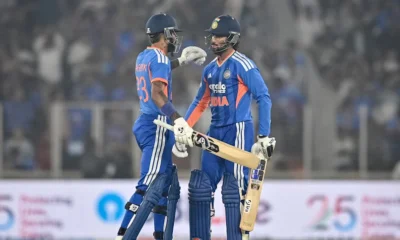
 Cricket news23 hours ago
Cricket news23 hours ago
 Cricket news9 hours ago
Cricket news9 hours ago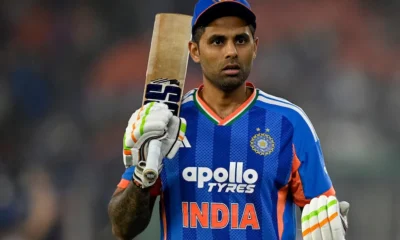
 Cricket news24 hours ago
Cricket news24 hours ago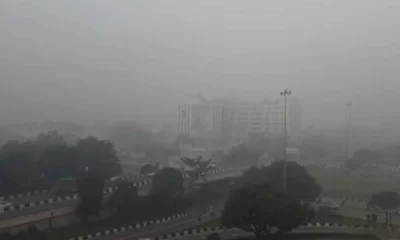
 India News9 hours ago
India News9 hours ago
 Entertainment24 hours ago
Entertainment24 hours ago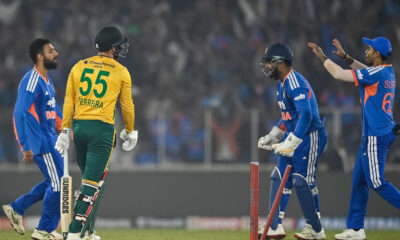
 Cricket news10 hours ago
Cricket news10 hours ago
 India News10 hours ago
India News10 hours ago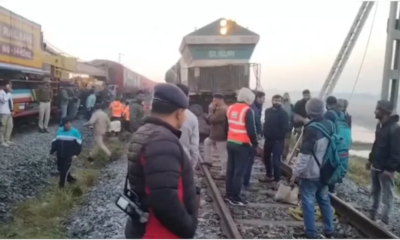
 India News10 hours ago
India News10 hours ago



















